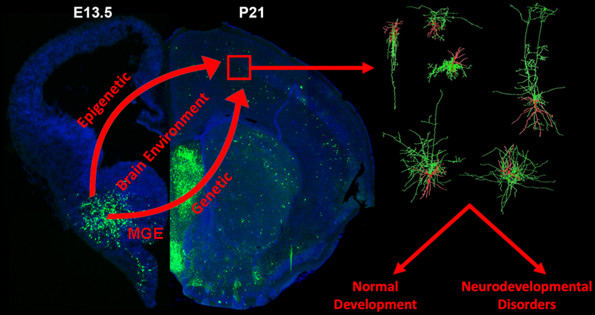Home
Proper brain function requires a balance between excitatory projection neurons and GABAergic inhibitory interneurons. Interneurons are an extremely heterogeneous cell population with distinct morphologies, connectivity, neurochemical markers, electrophysiological properties and transcriptomes. Abnormal development and function of interneurons has been linked to the pathobiology of numerous neurodevelopmental disorders such as epilepsy, schizophrenia and autism. Many genes implicated in these diseases are enriched in interneuron precursors. Thus we believe that a thorough description of the genetic, molecular and cellular mechanisms regulating interneuron fate and maturation is critical to understand both normal brain development and disease etiologies.
My lab is focused on understanding how intrinsic epigenetic regulatory mechanisms & genetic programs interact with signals from the brain environmental to generate this incredible interneuron diversity. We take a multifaceted approach to this issue, utilizing both in vitro and in vivo approaches to identify candidate mechanisms that regulate interneuron fate decisions. We apply cutting edge techniques such as single cell sequencing and spatial transcriptomics that provide unprecedented resolution of cellular transcriptomes. Our goal is to discover genetic and epigenetic mechanisms that direct interneuron differentiation and maturation, which will act as a springboard for future research in our lab and for the field of neurodevelopment.

 BACK TO TOP
BACK TO TOP